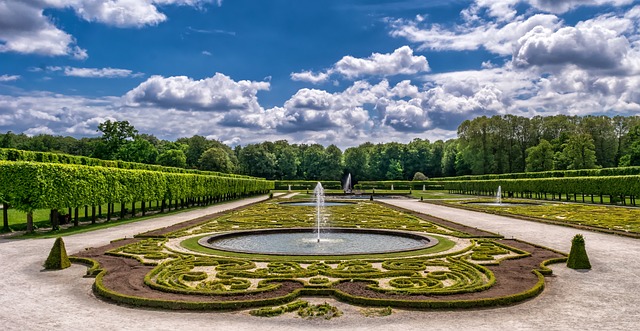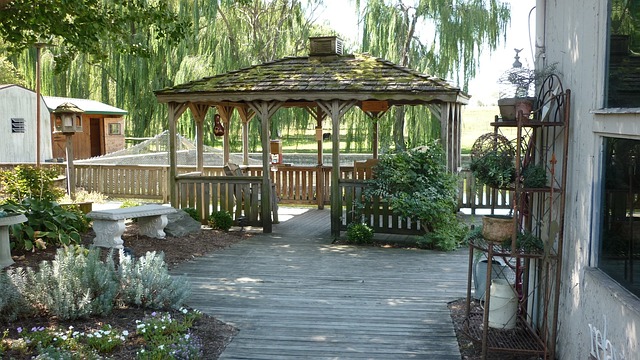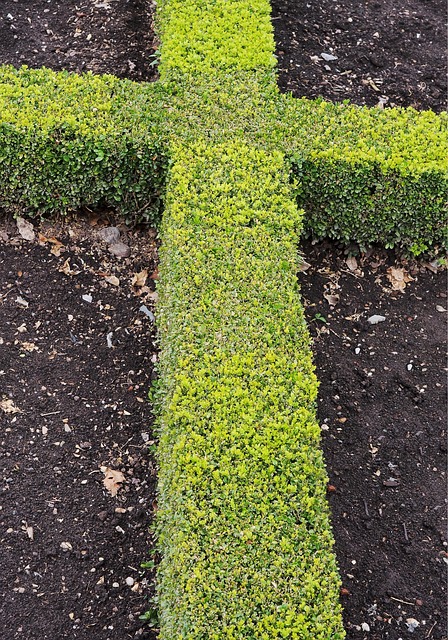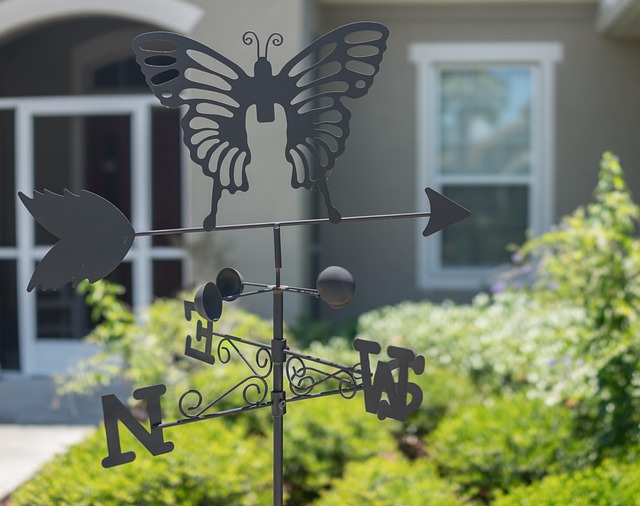Incorporating strategic height arrangement into landscaping design tips creates visually stunning outdoor spaces with depth and dimension. By organizing plants by height, you guide the viewer's eye and mimic natural landscapes, fostering healthier plant growth and enhancing aesthetics and functionality. This game-changer for landscaping results in vibrant gardens with layers that contribute to overall depth and visual appeal, providing a satisfying sense of order and balance. Effective strategies like the 3/4 rule ensure balanced planting, preventing shade from overwhelming smaller plants, and improving air quality and insulation in urban spaces.
Arranging plants by height is a powerful technique to enhance your garden’s depth and dimension, creating a visually stunning landscape. Our article guides you through effective strategies with expert advice from certified professionals. Learn how to elevate your landscaping with trusted tips for optimal plant placement, ensuring both aesthetic appeal and ecological balance. With our innovative design ideas, achieve powerful dimensions in your outdoor space, resulting in proven, successful results recognized in the industry. Discover these essential landscaping design tips for a flourishing, dimensioned garden.
- Elevate Your Landscaping: Trusted Height Arrangement Tips
- Optimize Garden Depth: Superior Plant Placement Guide
- Innovative Design for Powerful Plant Dimension
- Certified Strategy for Effective Landscaping Heights
Elevate Your Landscaping: Trusted Height Arrangement Tips

Elevate your landscaping game with trusted height arrangement tips for depth and dimension. Plants, like any art form, require strategic placement to create a visually appealing and harmonious space. By arranging them by height, you can effectively guide the viewer’s eye, creating layers that mimic nature’s own design. For instance, tall trees or shrubs at the back, followed by mid-height bushes and ground covers, add a stunning vertical element that makes your garden feel more expansive.
In landscaping design tips, prioritizing height arrangement is key to achieving a balanced and captivating outdoor space. Consider the mature size of each plant species to ensure optimal placement. For example, if you have limited space, select smaller varieties of tall plants to avoid overwhelming the area. This thoughtful approach not only enhances aesthetic appeal but also ensures your plants thrive in their designated spots, fostering healthier growth and long-term beauty.
Optimize Garden Depth: Superior Plant Placement Guide

Optimizing garden depth through strategic plant placement is a powerful landscaping design tip that creates a visually stunning and structured outdoor space. By arranging plants by height, you can achieve a sense of depth and dimension, transforming your garden into a harmonious landscape. This technique is especially beneficial for large or small gardens, allowing you to maximize the use of vertical space and create a captivating atmosphere. For instance, placing tall trees or shrubs at the back of the garden while positioning shorter plants in front creates a layered effect that adds complexity and depth, enhancing overall aesthetics.
Professional landscapers often utilize this method to ensure plant health and longevity. By understanding sunlight exposure and each plant’s specific needs, you can arrange them accordingly. For sunny areas, opt for taller species that thrive in such conditions, while shadier spots can accommodate smaller plants. This careful consideration results in a vibrant garden where every layer contributes to the overall depth and visual appeal. Such strategic design not only enhances the beauty of your outdoor space but also provides a satisfying sense of order and balance, making it a game-changer for anyone looking to elevate their landscaping design tips.
Innovative Design for Powerful Plant Dimension

Innovative landscaping design tips can transform your outdoor space into a vibrant, dimensional masterpiece. One powerful technique to achieve this is by arranging plants based on their height, creating depth and visual interest. This simple yet effective strategy allows you to craft layers of greenery that not only enhance the aesthetics but also provide a sense of scale and structure. For instance, positioning tall trees or shrubs as the backdrop, medium-sized perennials in the middle, and low-growing ground covers at the foreground creates a layered effect that captivates the eye.
Consider a residential property where the homeowners sought to maximize their small garden’s potential. By implementing a height-based planting scheme, the designers were able to create a stunning, multi-layered landscape. Tall bamboo specimens provided a striking vertical element, while various perennials like daylilies and hostas added texture and color in the middle ground. Low-growing sedums and mosses not only filled in the foreground but also attracted beneficial insects and butterflies, showcasing how thoughtful plant arrangement can foster both beauty and biodiversity.
Certified Strategy for Effective Landscaping Heights

Arranging plants by height is a certified strategy for effective landscaping that builds depth and dimension in your garden. It involves thoughtfully selecting plant varieties with varying heights and densities to create visual interest from the ground level up. For instance, place tall, slender trees or shrubs at the back of borders, surrounded by mid-height perennials and low-growing ground covers. This creates a layered effect that adds texture and balance, making your landscape both striking and inviting.
Excellence in landscaping design tips lies in precise planning and execution. Professionals often use metrics like the “3/4 rule” to ensure optimal plant arrangement. This involves positioning taller plants at least 3/4 of their height apart from shorter ones, preventing shade from overwhelming smaller varieties. A successful example can be seen in urban rooftops where carefully curated combinations of succulents, shrubs, and perennials not only enhance aesthetics but also improve air quality and insulation—a true testament to the power of strategic landscaping design tips.
By strategically arranging plants based on their heights, you can create a visually stunning landscape that adds depth and dimension to any outdoor space. Following the expert tips outlined in this article—from optimizing garden depth to innovative design strategies—you’ll gain the confidence to craft a lush, harmonious oasis. Implement these landscaping design tips, and watch your garden transform into a vibrant sanctuary that captivates the senses and enhances your overall well-being. Trust in the power of thoughtful plant placement, and let your outdoor haven become the envy of the neighborhood.
